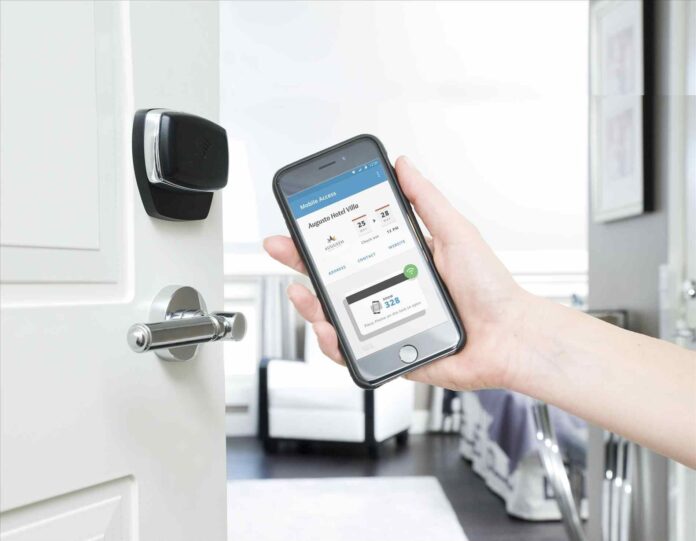RFID is a technology that is now taking the security world by storm. With this technology, you can easily integrate door security to control who is allowed to enter the premises. For those who don’t know what RFID means, it’s a radio frequency identification where digital data, usually encoded in RFID tags, is perceived by a reader via radio waves.
Often, you will have RFID door locks with this three-component technology. The three components include an antenna, a reader, and an RFID tag. These three components are necessary to make the lock system effective at controlling who has access.
RFID technology works by simply transmitting the radio waves from the tags to the RFID reader, which is then converted into more usable data. The converted data is then transmitted over a communication interface to either be analyzed by a monitor or stored for later reference.
Entrances that feature this technology can be found across a wide variety of industries like chemical manufacturing, retail stores, construction, office real estate, and more.
What makes this RFID technology very popular in commercial buildings are the many advantages it offers. It is a top trend in security for many businesses, companies, and organizations. RFID is easy to use, easy to install, and there are many providers of RFID door lock systems to choose from. It’s also an inexpensive form of door access security.
However, like anything that has good sides, there are also disadvantages and some risks involved in incorporating RFID technology as access control security. Here we are going to see some of the disadvantages of an RFID door lock system.
The key card can be lost
Similar to the common padlocks with their keys, which can be lost and leave you locked out of your house, RFID door locks also carry the same risk. RFID tags are usually stored on a key card or fob. It’s all-too common to misplace your RFID key card and be locked out of your office or workplace. Tracking down your misplaced key card and finding an alternative way into the building can be a headache. And if the lost RFID card is found by another person, they can easily enter the premises unnoticed.
The risk of RFID being hacked
As with any other technology, hackers are there trying to break into your security system so they can gain access to your home, business premises, or office. RFID technology has been around for a few years, and hackers have found many ways to compromise the system. The RFID door lock system is not immune to bypasses, and someone with decent hacking skills can take action.
Malfunction in the event of a power failure
RFID technology requires electricity in order to operate properly. So in the event of a power outage, your door may not be well equipped to control who has access to your office or home. Without a steady power supply, RFID door lock systems can remain open for anyone to enter or exit, or lock down completely. RFID security systems should include backup power and fail safes in case of a power loss.
Expensive repair that offsets the initial cost
Maintaining a RFID door lock system is much more expensive than installing one that does not have that technology. It is more difficult to repair such a door lock system because there are more components involved than with a traditional metal key door lock. In addition, RFID door lock systems need updates and maintenance to keep them working effectively, which can be costly in large buildings with many doors. Another cost to remember is the number of RFID key cards and fobs you need for all the users, and replacements for when credentials are inevitably lost or stolen.
Conclusion
RFID door lock systems can sometimes do more harm than good, and leave businesses at risk for security breaches. But when they are used in conjunction with other entry system technology and security strategies, they can be effective and your premise will remain secure.





